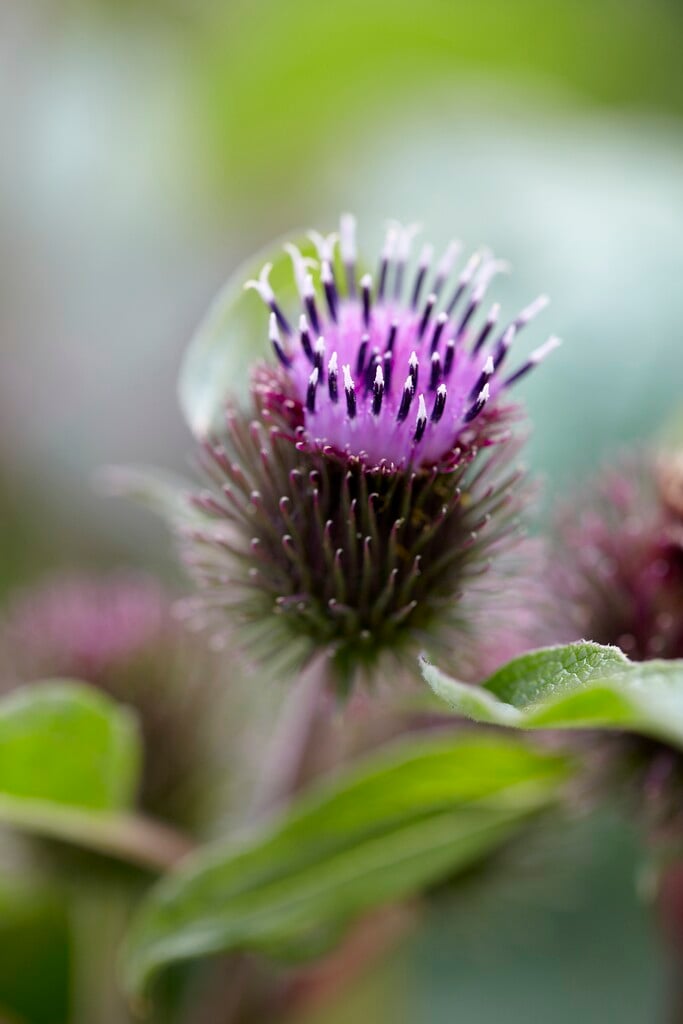Arctium minus
lesser burdock
An erect, branching plant to 1.5m, arising from a basal whorl of large green leaves that have wavy margins. In summer purplish flowerheads are held in clusters on the leafy main branches. Characteristic brown, spiny, hooked seedheads persist thoughout winter
Synonyms
Lappa minor
Buy this plant
Size
Ultimate height
1–1.5 metresTime to ultimate height
1–2 yearsUltimate spread
1–1.5 metresGrowing conditions
Moisture
Moist but well–drained, Well–drainedpH
Acid, Alkaline, NeutralColour & scent
| Stem | Flower | Foliage | Fruit | |
| Spring | Green | |||
|---|---|---|---|---|
| Summer | Purple | Green | ||
| Autumn | Brown | |||
| Winter |
Position
- Full sun
- Partial shade
Aspect
East–facing or North–facing or West–facing or South–facing
Exposure
Exposed or Sheltered Hardiness
H5Botanical details
- Family
- Asteraceae
- Native to GB / Ireland
- Yes
- Foliage
- Deciduous
- Habit
- Clump forming
- Genus
Arctium are robust, tap-rooted biennials with large downy leaves and solitary or clustered thistle-like flower-heads turning into burr-like fruiting heads
- Name status
Correct
- Plant range
- Europe, N. Africa
How to grow
Cultivation
Ideally grow in moist soil in full sun or partial shade. It will tolerate a wide range of soils
Propagation
Propagate by seed; sow in situ in the autumn or early spring. Alternatively, sow in a tray and transplant before the tap-root develops. To improve germination pre- soak or scarify the seed
Suggested planting locations and garden types
- Wildlife gardens
- Wildflower meadow
Pruning
No pruning required
Pests
Generally pest-free
Diseases
Generally disease-free
Get involved
The Royal Horticultural Society is the UK’s leading gardening charity. We aim to enrich everyone’s life through plants, and make the UK a greener and more beautiful place.